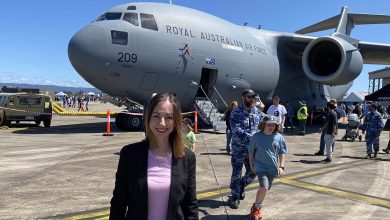The Aussie Milk Bar
Recently, a plaque was installed in Martin Place, Sydney where once stood the “Black & White 4d. Milk Bar” which was credited as being the first Milk Bar in Sydney.
The Black and White Milk Bar that Mick Adams (Joachim Tavlarides) opened in 1932, sported a sleek bar topped with soda fountain pumps and gleaming milkshake makers. Trade was brisk on its first day, with 5000 customers breasting the bar, and soon, weekly patronage had grown to 27,000. Milk Bars have now largely disappeared from Australian shopping strips although a number still exist in country towns, attracting locals and the travelling public.
Upon my arrival in this fabulous country in the very late 1950s, I discovered that great institution of the traditional Australian milk bar. They were extremely popular during their heyday of the 1950s, 1960s and 1970s. This coincided with the influx of migrants from Italy and Greece which saw many make their fortunes from these suburban stores.
The floors were always linoleum (lino) and the counters were Laminex. Your purchases were added up on butchers’ paper (no-one had calculators or self-calculating cash registers in those days). You had to hope the proprietor was good at maths!
A typical layout was a long thin shop, with a long counter on one side. At the street end was often a sweet counter selling lollies. This was where children spent countless hours deciding which lollies to include in their “mixed lolly” bag by pointing grubby little fingers on the glass exclaiming “I’ll have one of those & two of those…..”.
A mainstay was the milkshake mixer, which necessitated having the milk and icecream nearby, as well as the flavouring syrups (chocolate, caramel, strawberry, banana, lime, and vanilla) and, of course, the malt powder (because a malted milkshake was only an extra five cents) & tasted so much better. You had to drink your milk shake in the shop in those days, as the containers were metal and you had to give them back!

Many had a juke-box situated in corner somewhere where you could put a 10 cent coin in and play some great rock’n’roll music. Most stores had tables affixed to the wall and bench seats formed in booths, some with small individual juke boxes on the table.
There was a grill, and a wide range of hamburgers or steak sandwiches where the owner or sales assistant would cook to order, featuring the usual Australian accompaniments such as beetroot and fried onions as well as the usual cheese, lettuce and tomato plus variations including egg and pineapple. Also available were hot pies, pasties & sausage rolls (with sauce).
Chocolate bars and packets of potato chips were on sale, as were a small but diverse range of other items: boxes of chocolate for lastminute gifts, cigarettes and tobacco, painkillers, packs of tissues, and a few stores also sold basic groceries such as boxes of cereal and cans of baked beans.
On weekends after the newsagent closed you could sometimes get newspapers and a few magazines there too. The milk bar sold a huge range of items and was open from early morning to late in the evening.
On the other side of the shop from the counter there were usually free-standing cabinets holding soft drinks, flavoured milk in cartons, ice creams such as Paddle Pops (on a stick) or the Triple Treat (layers of ice cream and marshmallow wrapped in chocolate).
The proprietor was invariably male, and worked the shop together with any of his children who were old enough, and perhaps one or two assistants. His wife was hard at work sourcing ingredients and preparing them “out the back”, juggling this with the role of mother.
But every milk bar was different and reflected the aspirations of its owner. Where I lived, we had a choice of two milk bars, each with a unique difference, one sold Peters Ice Cream & one sold Streets Ice Cream.
Many readers, now in their 70s, 80s or 90s, remember those halcyon days of milk shakes, Ice Cream Sodas (Spiders) and the music and artists of those days of their youth. I know that my memories of that era seem like yesterday,










